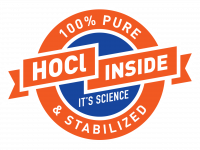Cleaning vs Disinfecting vs Sanitizing

The terms “clean”, “sanitize” and “disinfect” are often used interchangeably. Is there a meaningful difference between these terms? The USA CDC says that – in broad terms – cleaning removes germs; disinfecting kills germs; and sanitizing decreases the number of germs. The differences between these processes can be subtle. Perhaps the best way to compare the three is to think of cleaning on one end of a continuum, and disinfecting on the other end. The goal of cleaning is not to kill germs, but to physically remove germs, dirt, and grime from a hard surface or object using soap and water. The purpose of disinfecting is not to clean, but to kill all the germs on the surface or object. Sanitizing is part way between cleaning and disinfecting. Its purpose is also not to clean, but to kill most of the germs on a hard surface or object to a level considered safer. The USA EPA defines disinfecting and sanitizing slightly differently. It says chemicals used as sanitizers must kill bacteria – but not necessarily viruses – on hard surfaces. In the case of chemicals used as disinfectants, the EPA says these must kill both viruses and bacteria on surfaces. Ideas for this blog were gathered from here, here, and here.
Research has validated HOCl as a non-toxic, non-irritating, and eco-friendly disinfectant and sanitizer that can be used in many different industries. You can alleviate your anxiety about disinfectants and sanitizers by adopting what is already proven to be safe – HOCl.
